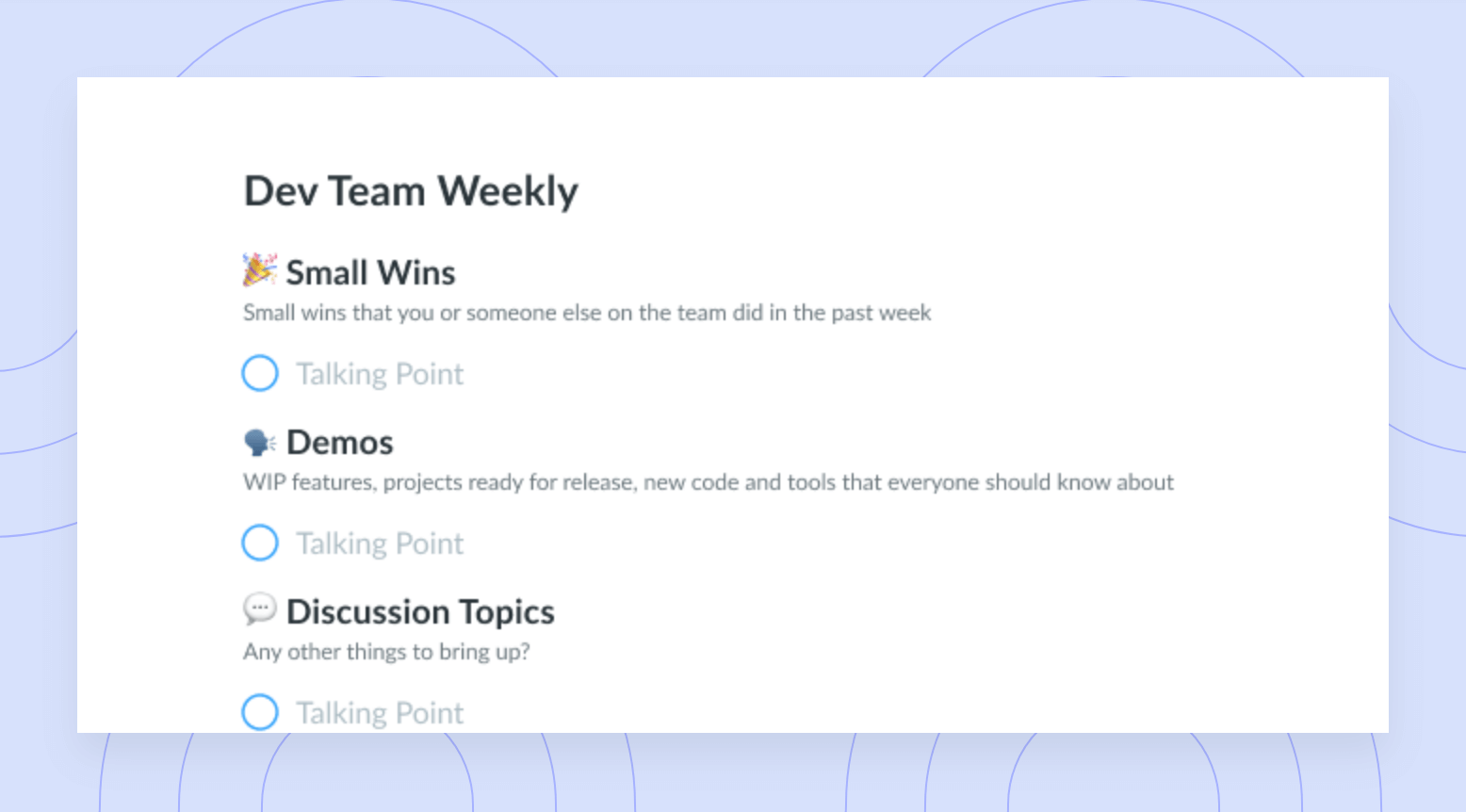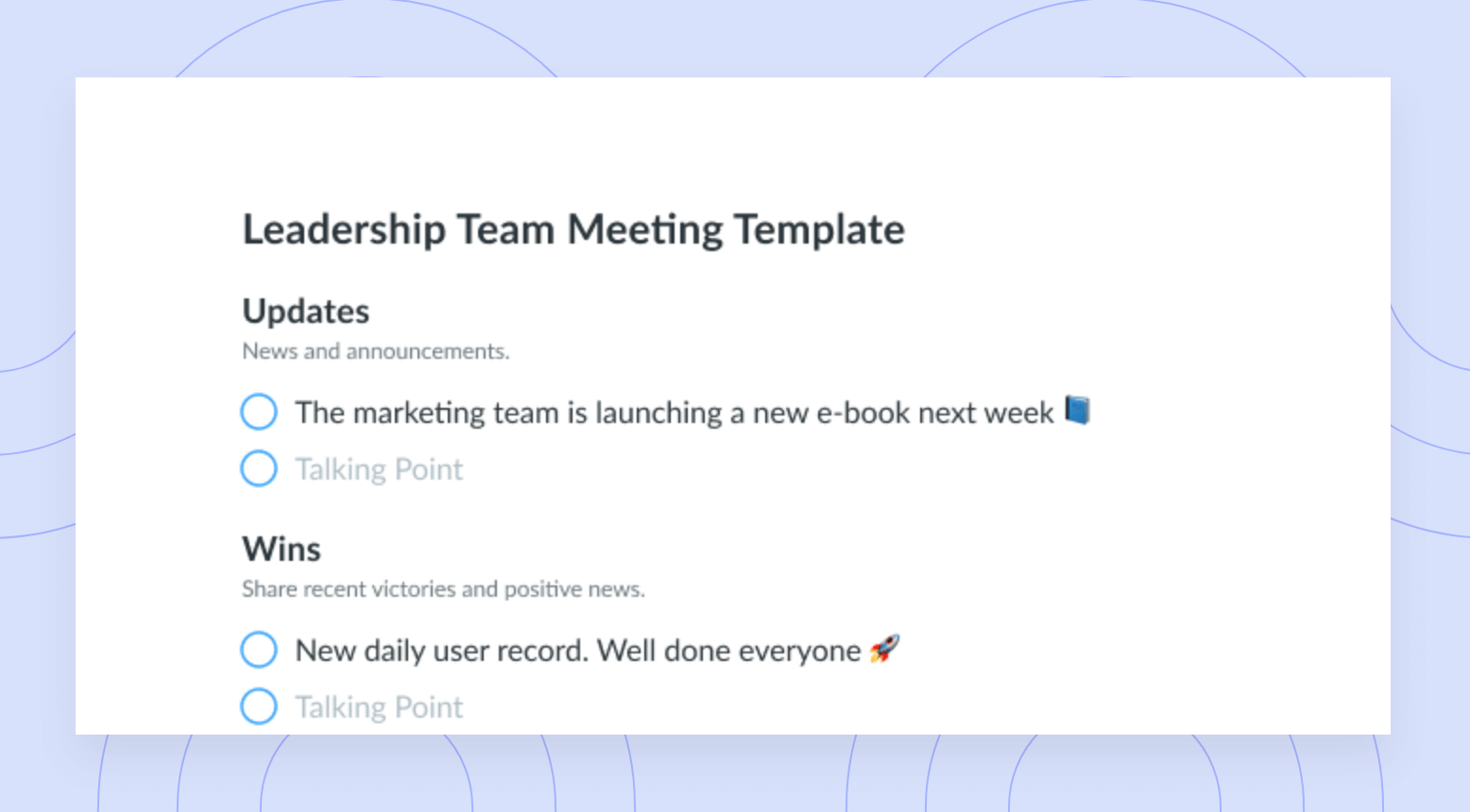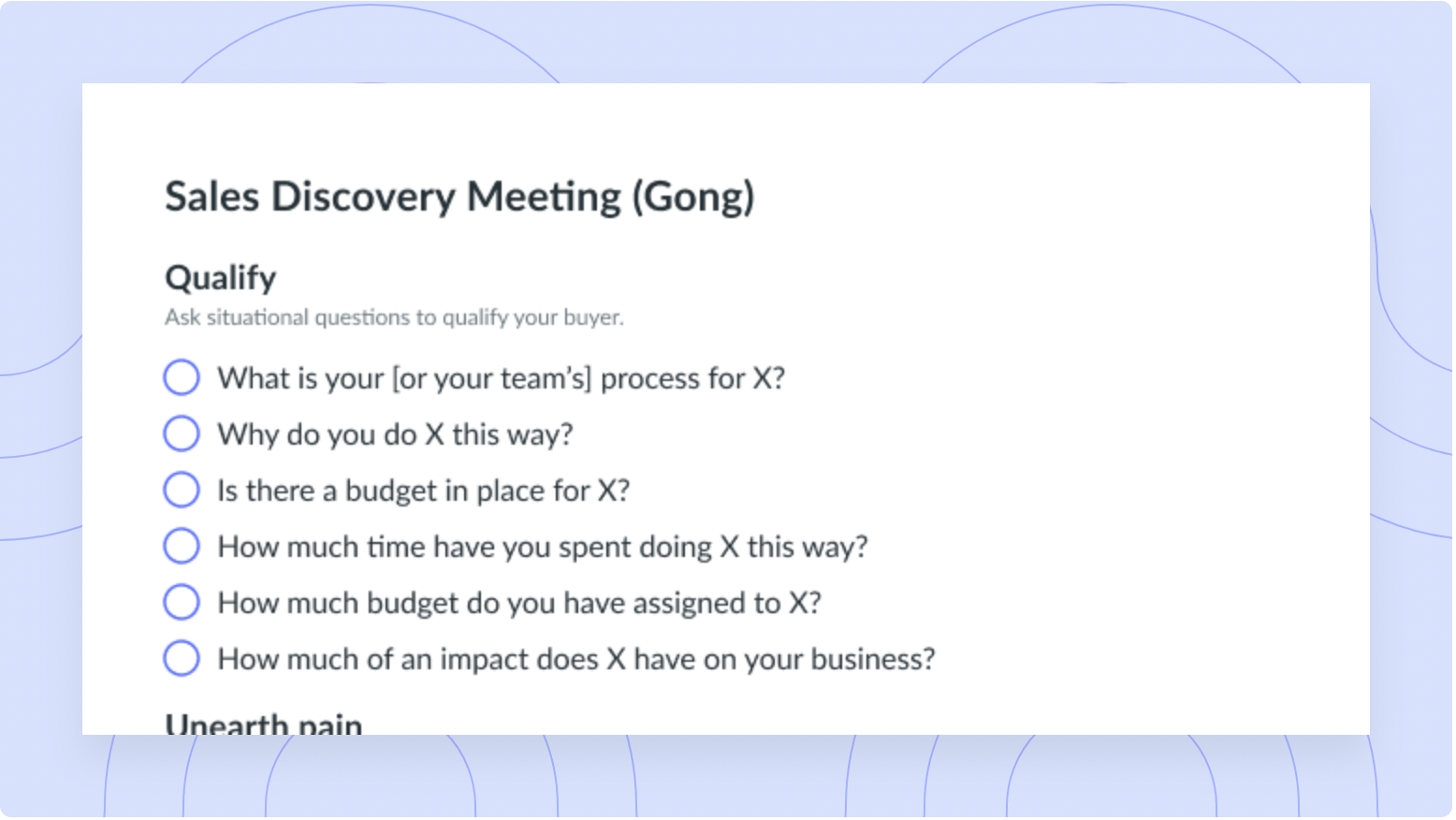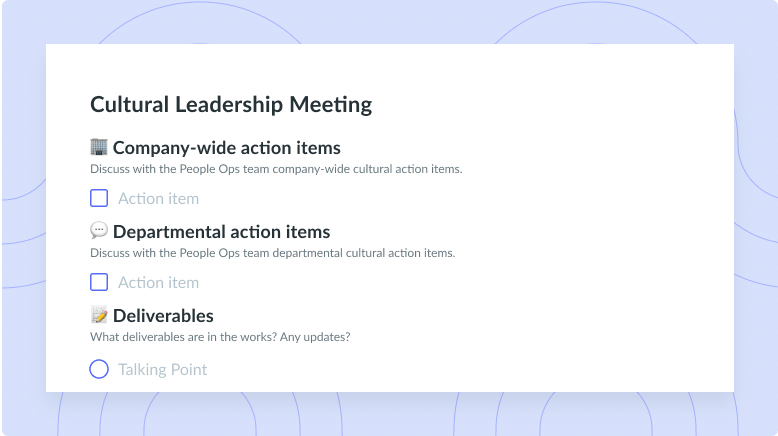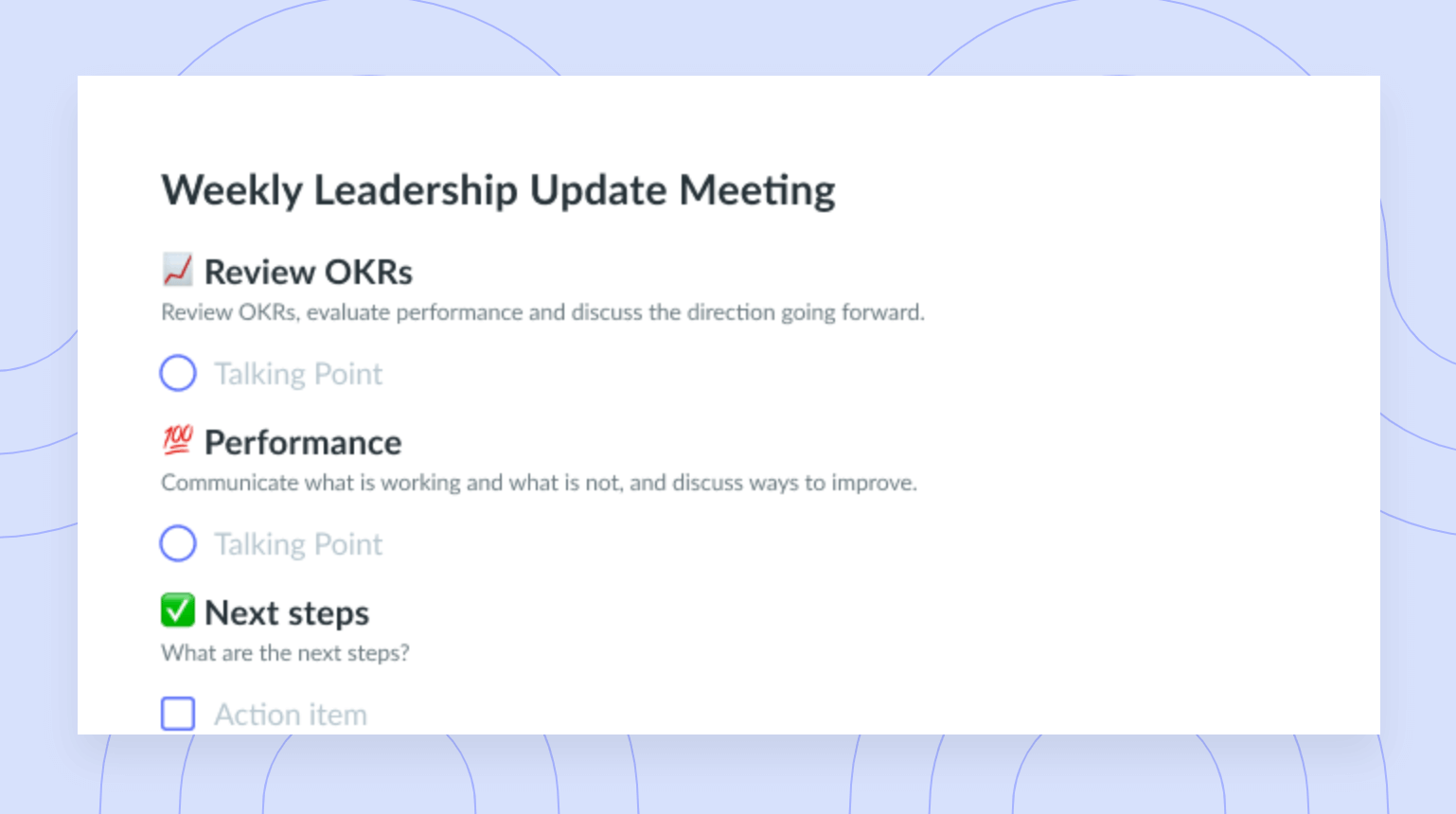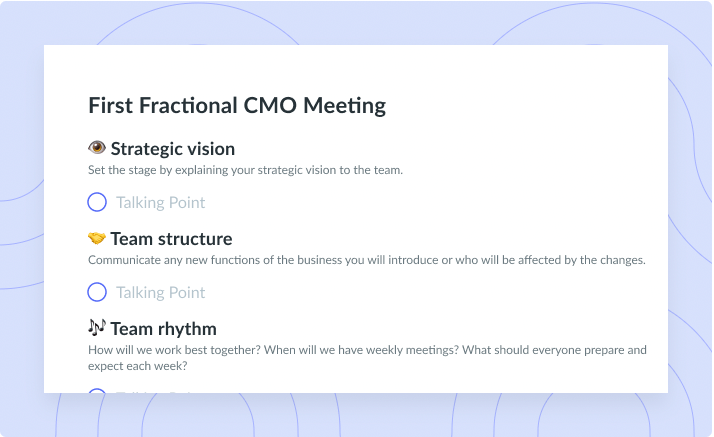6 Ways to Build a Successful Leadership Team
Looking to build a successful leadership team but unsure where to begin? Follow these six tips to build your dream team.
There are many ways a company can make strides towards success.
In addition to having exceptional customer service to support a product that stands out from the crowd, a company needs to have an effective and successful leadership team supporting it. However, this type of leadership team likely can’t (and shouldn’t) be built overnight.
It takes time and energy to build a leadership team that other employees can depend on and look to when times get tough. Not sure how to start building this type of team? Fellow is here to break it all down.
- What is a leadership team?
- The importance of a leadership team
- Reasons leadership teams fail
- 6 ways to build your leadership team
- Free leadership team meeting agenda
What is a leadership team?
An organization’s leadership team will typically comprise the upper-level executives you have confidence in and trust to be good leaders. Peter Anderton, Director Of Internal Alignment, said it best in episode 83 of our Supermanagers podcast when he shared,
“A good leader inspires people to have confidence in their leader, but a great leader inspires people to have confidence in themselves.”
The members of your company that will be on this team are usually:
- The chief executive officer (CEO)
- Vice President (VP)
- Chief Operating Officer (COO)
- Chief Financial Officer (CFO)
- Chief Technology Officer (CTO)
- Chief Information Officer (CIO)
- Chief Marketing Officer (CMO)
These are the employees who run daily operations and make decisions that affect the overall direction and success of the organization. Leadership members have many responsibilities, including meeting weekly to discuss strategy and various business operations, problem-solving, helping set goals, and providing updates regarding their respective departments.
The importance of a leadership team
Why put in the effort to organize a solid and effective leadership team?
Having the right leaders in every significant department within an organization will hopefully inspire, motivate, and guide each leader’s team to success. These leaders will also play considerable roles in retaining top talent and ensuring every department member is as productive as possible in their daily tasks and responsibilities.
Having employees with the right set of hard and soft skills in leadership roles can ensure all departments feel supported in their endeavors. Investing in the right people to make up your leadership ensures your company shines from the inside out.

Build a culture of effective meetings with your leadership team
Level up your meeting habits to boost engagement and productivity with a collaborative meeting agenda. Try a tool like Fellow!

Reasons leadership teams fail
Unfortunately, leadership teams are not immune to failure. There are four key reasons leadership teams fail, so keep these in mind to ensure yours doesn’t make these mistakes.
- Inability to collaborate
- Lack of conflict management skills
- Inability to manage stress
- Lack of change management
1Inability to collaborate
Just because different people are on the same team doesn’t mean everyone will immediately mesh and work together seamlessly. With varying communication styles, personalities, and strengths and weaknesses, sometimes executive members of a leadership team just aren’t compatible.
However, the goal when creating a successful leadership team should be to develop a group of people who can handle each other’s strengths, weaknesses, and varying dispositions and consider them when making decisions.
2Lack of conflict management skills
No matter what industry your business is in or how big or small your company is, there will always be conflict, especially on a leadership team.
In fact, your executives shouldn’t agree all the time! When everyone constantly agrees, and no new ideas or paths are presented, your business will struggle to grow, develop, and remain innovative against competitors. Executives need to have strong conflict management skills to avoid a toxic workplace environment and set necessary boundaries when conflicts arise.
Some effective conflict management skills are strong communication, emotional intelligence, active listening, patience, and positivity.
3Inability to manage stress
It’s stressful to be a leadership team member, so knowing how to manage stress levels is key to success. Not managing stress levels will only lead to a lack of productivity and even burnout. Just because an employee is a leadership team member doesn’t mean they need to work themselves to the brink of exhaustion where their performance and productivity start to suffer.
4Lack of change management
Finally, leadership teams fail because they lack the ability to practice change management; this is when leaders get set in their ways and don’t realize that changing a strategy or plan is necessary for success. It’s important to remember that sometimes businesses need to shake things up to be effective. But, without knowing how to practice change management, things are disorganized and chaotic.
New leaders added to the team can sometimes come in too strong, with too much disruption and change. Too much change too quickly can lead to employees and other leadership team members feeling anxious and lacking trust in the organization.
Every leadership team member needs proper change management training to avoid this disorganization.
6 ways to build your leadership team
As you build your leadership team, there are six elements to keep top of mind to ensure its long-term success.
- Hire the right people
- Be transparent about your expectations
- Create and communicate a clear vision
- Encourage teamwork
- Set and measure goals
- Play chess, not checkers
1Hire the right people
It should go without saying that to build a successful leadership team, you need to be intentional and thoughtful about the people you hire. Consider which individuals you can bring together so the necessary talent and diversity in the C-suite can be used to come up with new ideas, challenge traditional thinking, and collaborate on meaningful and efficient change. It’s crucial to hire a diverse group of leaders with various strengths and ways of thinking that the team can use to their advantage.
2Be transparent about your expectations
Be as clear and transparent as possible about the expectations of your leadership team. Depending on the size of your organization, these executives will have specific responsibilities, so be clear about the goals you want your leadership team to achieve.
Remember, nothing will fail a strategy or initiative faster than not communicating with the leaders who are tasked with bringing that strategy to fruition.
3Create and communicate a clear vision
Once expectations are set, do the same to establish a clear vision that you’d like to see brought to reality. Without an established vision or plan that executives and their teams can work towards, a company will fall apart, and fast! The company’s vision needs to be regularly reinforced with the team at every opportunity.
For instance, when there’s an opportunity to draw positive attention to how a recent event or strategy directly aligns with that vision, call out the opportunity for everyone to notice!
4Encourage teamwork
While yes, there is an “I” in “leadership team,” this doesn’t mean the chosen executives shouldn’t work as one cohesive group. Like any other group, your leadership team needs to achieve effective teamwork.
Your leaders need to come together to work as one; doing so doubles as a sign of openness, trust, and respect among one another. Ultimately, if your leaders can’t work as a team, it’ll be hard to encourage any other departments to do so.
5Set and measure goals
To know how your leadership team is performing, it’s important to set goals for them to hit and to measure their progress. Thankfully, Fellow makes it easy to track and measure all types of OKRs your leaders may have on their plate. The OKRs amongst your C-suites should be ambitious goals that need time and focus to be achieved. So, catching at-risk goals early is crucial while there’s still time to fix them; this can’t be done if you only review your OKRs sporadically.
With Fellow, reviewing those objectives during your board meetings is simple, so nothing ever falls through the cracks!
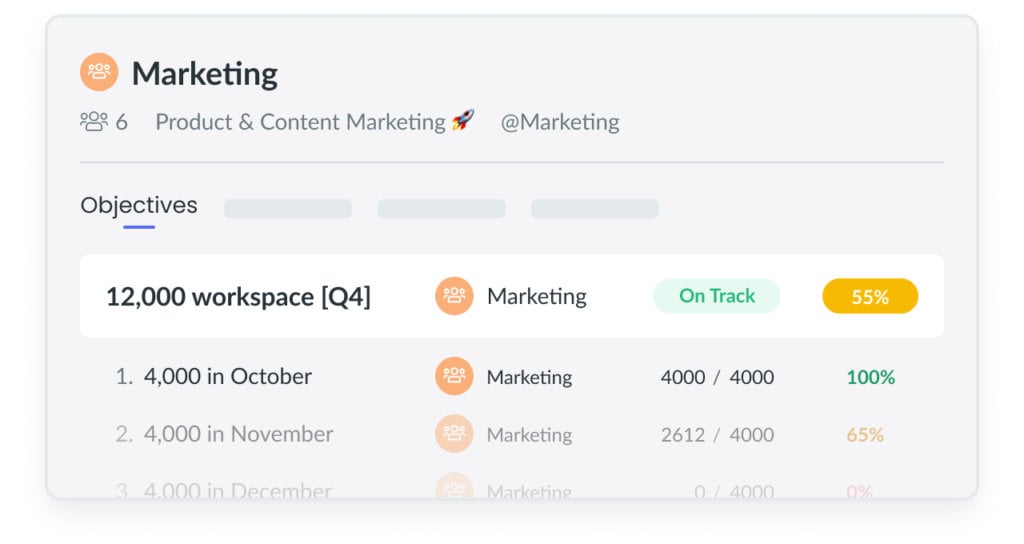
6Play chess, not checkers
Successful leadership teams play chess, not checkers. New to this analogy? Let us explain.
When you play checkers, the pieces are all interchangeable and uniform. Plus, they all move the same way. But, when you play chess, each piece has its own abilities, which every player must be aware of for the game to take place.
The best leaders play chess because they each have their own unique skill set that they bring to the leadership team, plus their strengths and weaknesses that make them an asset to work with.
Free leadership team meeting agenda + tips to run a leadership meeting
Running an effective leadership meeting takes a specific formula that should be mastered.
Some tips to consider are:
- Always send a comprehensive and thorough agenda in advance
- Share important updates with need-to-know details
- Review progress on key metrics and goals
- Mention any good news, success stories, and highlight wins
- Bring up challenges, roadblocks, or issues teams may be experiencing
- Record the meeting notes to reference later
- Capture decisions and assign action items for next time
- Ask for feedback from the C-suite once the meeting has come to a close
Beyond these tips, make the most of your next leadership meeting by following this free leadership team meeting agenda template that will drive your company in the right direction and help everyone make strategic decisions.
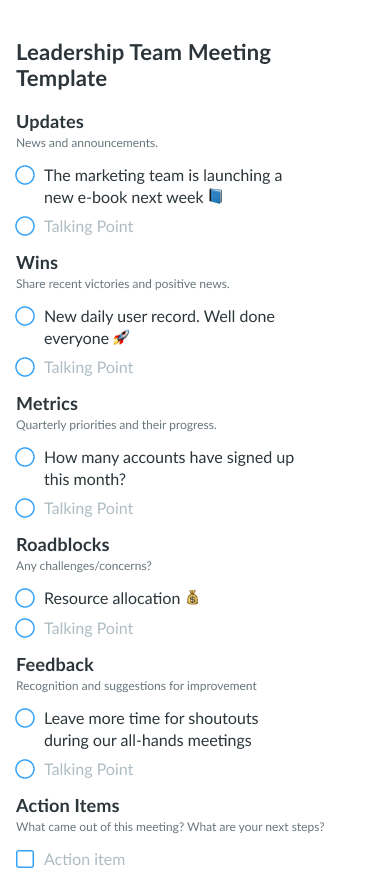
Let leaders be your guide
Once you find the right members of your leadership team, you’ll know. And once your leadership team is fully established, let them shine! Trust them to make the tough decisions, solve the significant challenges, and work together to achieve common goals.
After all, if you don’t trust the members of your C-suite, it’s likely time to go back to the drawing board and find someone new.










